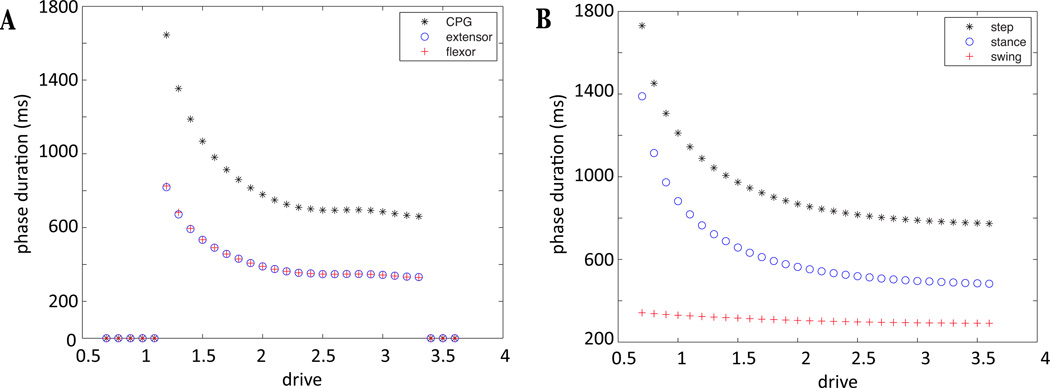Figure 3.
Control of the locomotor speed in the neuromechanical model by a supra-spinal drive applied identically to both half-centers. (A) Extensor (blue circles) and flexor (red plus signs) phase durations sum to the CPG cycle period (black stars) and change identically as drive varies in the absence of afferent feedback (fictive locomotion state). (B) Step cycle duration (black stars) varies asymmetrically with drive when sensory feedback from the oscillating limb is incorporated into the CPG. When limb motion is included, the step cycle consists of stance (blue circles) and swing (red plus signs) phases, defined by the presence and absence of ground contact, respectively. The presence of feedback modifies the increase in locomotor speed by decreasing the duration of the stance phase, at a relatively constant swing duration. In addition, the CPG oscillates over a wider (particularly lower) range of drives, compared to the model without feedback.

